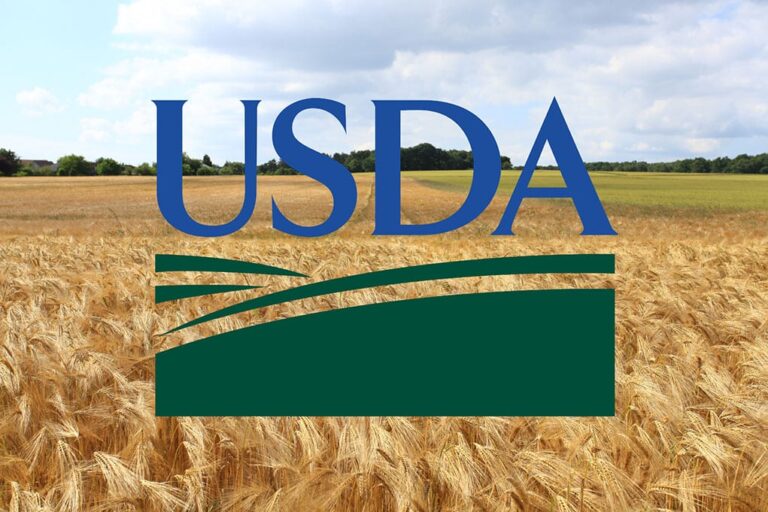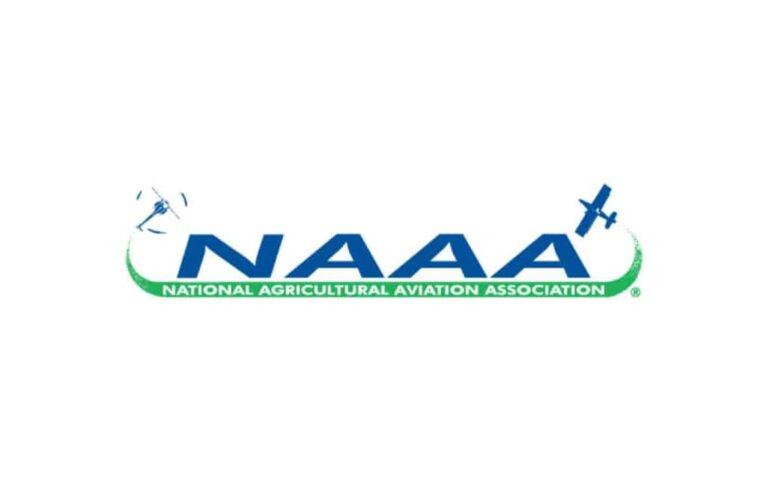(WASHINGTON D.C.)– On Tuesday, the U.S. Treasury Department released a highly anticipated update to the Department of Energy’s Greenhouse Gases, Regulated Emissions, and Energy Use in Technologies (GREET) for guidance on how feedstocks like corn ethanol can qualify for sustainable aviation fuel (SAF) under the Inflation Reduction Act’s 40B tax credit. Read more from the Treasury Department here: https://home.treasury.gov/news/press-releases/jy2307
This is a developing story. Industry reaction can be found below:
ACE Reaction to New 40B GREET Model for SAF Tax Credit
Sioux Falls, SD – Today, the U.S. Treasury Department released a highly anticipated update to the Department of Energy’s Greenhouse Gases, Regulated Emissions, and Energy Use in Technologies (GREET) model, providing guidance on how feedstocks like corn ethanol could qualify for sustainable aviation fuel (SAF) under the 40B tax credit of the Inflation Reduction Act (IRA). Under 40B, SAF with lifecycle greenhouse gas (GHG) emissions at least 50% cleaner than conventional jet fuel qualifies for the tax credit if sold prior to January 1, 2025. The value of this credit is determined on a sliding scale, equal to $1.25 plus an additional $0.01 for each percentage point by which the lifecycle GHG emissions reduction exceeds 50%.
The new 40B GREET model announced today will recognize GHG reductions from carbon capture and sequestration (CCS), renewable natural gas, and renewable power used to produce ethanol for qualifying SAF and include a “safe harbor” pilot program for corn ethanol produced with bundled climate-smart agriculture (CSA) practices. Treasury also announced it will develop pathways for ethanol from CSA practices under the 45Z clean fuel production tax credit set to go into effect on January 1, 2025.
American Coalition for Ethanol (ACE) CEO Brian Jennings issued the following reaction upon initial review:
“The Biden Administration is providing an important tailwind for corn ethanol produced with no-till, cover crops and enhanced efficiency fertilizers to qualify as a feedstock for SAF under 40B so long as all three of these climate-smart agriculture practices (CSA) are adopted. This marks the first time a regulatory body has formally acknowledged the role CSA practices play in reducing corn ethanol’s GHG emissions, in this case enabling some ethanol-to-jet to qualify for the 40B credit.
“The United States Departments of Agriculture (USDA) and Energy (DoE) deserve praise for diligently ensuring this first step is being taken with respect to CSA practices. ACE is particularly grateful to U.S. Secretary of Agriculture Vilsack for successfully advocating that corn ethanol is part of the solution to fulfill the Biden Administration SAF goals and for his leadership on CSA pathways for corn ethanol under the new 45Z credit.
“While today’s announcement is a step in the right direction, ethanol-to-jet continues to face headwinds such as artificially inflated land use change (LUC) penalties in 40B GREET and the initial all or none requirement to bundle three CSA practices in order to produce qualifying corn ethanol feedstock for SAF.
“With the 2024 planting season underway and the expiration of the 40B credit on December 31, 2024, Treasury’s SAF guidance speaks more to the Administration codifying the important role CSA practices play in decarbonizing liquid fuels than the amount of ethanol-to-jet that will qualify for the 40B credit. Today’s announcement provides ACE a roadmap for how to prevent the conditions placed on CSA practices in 40B from being applied as 45Z is implemented. Ultimately, we need to enable farmers and ethanol companies to recoup value from these tax credits for their investments to reduce GHG emissions.
“We look forward to continued engagement with Treasury, USDA and DoE with respect to how the GREET model will apply to 45Z, which will not require bundling of CSA practices. We also appreciate the need to provide these agencies with irrefutable justification of the GHG benefits of CSA practices. That is why the ACE-led and USDA-funded Regional Conservation Partnership Program (RCPP) projects are critically important; they will generate scientifically significant datasets of the GHG reduction benefits of CSA practices used to produce ethanol in various regions across the country so the full GHG value of these CSA practices can be reflected in future iterations of the GREET model and be used by ethanol producers to obtain 45Z tax credits. ACE will proactively leverage our RCPP projects to fine-tune how CSA practices are scored and rewarded, and capitalize on our work with farmers to ensure commonsense monitoring, measuring, verification and reporting requirements (MMVR) for biofuel producers and farmers.”
45Z is a technology-neutral tax credit for transportation fuel used in a highway vehicle or aircraft produced and sold between 2025 and 2027. Credit values are based on the GHG emissions of the fuel compared to a baseline of 50 kilograms CO2 equivalent/mmBTU. The statute specifies use of the GREET model to determine the GHG emissions for nonaviation fuel. The value of 45Z is $0.02 cents per gallon for each carbon intensity point under 50 kg CO2e/mmBTU.
In February, ACE sent a
letter to members of the SAF Interagency Working Group (IWG) stressing the importance of GHG credits for climate-smart agriculture practices when updating the GREET Model for SAF lifecycle GHG emissions under Section 40B of the IRA. Accompanying ACE’s letter was an
analysis prepared by Ron Alverson of the ACE board of directors comparing modeled estimates of land use change (LUC) to what has occurred in the real world.
RFA Welcomes 40B Sustainable Aviation Fuel Guidance, But Says Additional Work Needed
|
|
| The 40B tax credit guidance and modified GREET model released today by U.S. Treasury begin to unlock the door for U.S. ethanol producers and farmers to participate in the emerging market for sustainable aviation fuels (SAF). However, more work must be done to fully open the SAF market to ethanol and properly recognize the climate benefits of modern agriculture and biofuels, according to the Renewable Fuels Association.
“Today’s guidance and modified GREET model help position ethanol-based SAF for takeoff, but more work is needed to fully clear the runway and get this opportunity off the ground,” said RFA President and CEO Geoff Cooper. “We are encouraged that, for the first time ever, this carbon scoring framework will recognize and credit certain climate-smart agricultural practices. We’re also pleased to see the integration of other carbon reduction strategies—like renewable process energy and carbon capture and sequestration—into the model. However, RFA believes less prescription on ag practices, more flexibility, and additional low-carbon technologies and practices should be added to the modeling framework to better reflect the innovation occurring throughout the supply chain.”
Cooper noted that today’s 40B package sets the stage for a more expansive and flexible modeling approach under the 45Z clean fuel production tax credit. RFA expects the Biden administration will soon request public comment on considerations and options for implementing the 45Z credit.
“We view today’s 40B announcement as the starting point—not the ending point—for additional modeling improvements, further integration of individual climate-smart agriculture practices, and emerging biorefinery technologies,” Cooper said. “45Z is where the rubber really meets the road. We look forward to working with USDA and other agencies across the administration to ensure 45Z is implemented in a way that truly swings the door wide open for farmers and ethanol producers to participate in the enormous decarbonization opportunity.”
The conversion of ethanol to jet fuel is one of the most promising forms of SAF, Cooper said. Low-carbon ethanol has key advantages as a feedstock for SAF, as it is cost-competitive with petroleum-based fuels, has established production and transportation infrastructure, and is by far the largest-volume biofuel produced in the United States, with output of nearly 16 billion gallons per year.
“We are especially grateful for the role that U.S. Agriculture Sec. Tom Vilsack and his team played in the effort,” Cooper concluded. “Sec. Vilsack has time and again demonstrated his commitment to serving rural communities, and understands the importance of lower-carbon, American-made renewable fuels.”
A History of Action
RFA has worked diligently with lawmakers and others over the past several years to ensure ethanol can participate in SAF opportunities. RFA’s efforts on the SAF tax credit began long before the Inflation Reduction Act was introduced, including correspondence with congressional tax-writing committees in August 2021 and a joint industry letter in April 2022. More recently:
- In February 2023, RFA filed extensive comments urging the allowance of GREET modeling for the sake of the SAF tax credits. In June and July, the organization welcomed the introduction of the Sustainable Aviation Fuels Accuracy Act in both houses of Congress.
- In August, at the RealClear Energy website, Cooper wrote about how farmers and ethanol producers can put “the S in SAF.” And in an August blog post, he pointed out how the SAF modeling debate isn’t really about GREET vs. ICAO, but about “current data vs. old data.” Click here for a chart RFA has developed to explain the key differences between the DOE GREET approach and the ICAO approach.
- In November, many RFA member companies signed on to a historic coalition letter that included major airlines, calling on the Biden administration to integrate the best available science and data regarding the carbon impacts of SAF into the tax credit program.
- RFA also endorsed the Farm to Fly Act in November, which would affirm a common definition of SAF for USDA purposes, as widely supported by industry and congressional leaders to enable U.S. crops to most effectively contribute to aviation renewable fuels via renewable fuels like ethanol. A Senate version was introduced in January.
- In January, RFA offered specific recommendations for ensuring that the best available science and data are used in determining eligibility for the SAF tax credit established in the Inflation Reduction Act.
- In February, a bipartisan group of 43 lawmakers in both houses of Congress sent a letter to the Interagency Working Group, asking it to meet the March 1 deadline for updates to the GREET model and ensure the updates are based on sound science, current data, and methodologies that properly recognize modern practices in agriculture and biofuel production.
- When the March 1 deadline passed, RFA called on the working group to move quickly, noting that it was important to get the modeling right. Later that month, RFA was part of a coalition of biofuel and farm advocates that called on the Treasury Department to swiftly resolve any questions standing in the way of efforts to scale up U.S. production of sustainable aviation fuel.
- Just last week—on April 24—RFA was part of another major coalition that called on agriculture committee leaders in Congress to boost the role of American farms in fueling low-carbon aviation by including meaningful SAF provisions, such as the Farm to Fly Act, into the farm bill.
- Finally, RFA is a founding member of the SAF Coalition, which launched Monday to accelerate the development and deployment of sustainable aviation fuel in the United States.
|
|
Growth Energy: New 40B Guidance an Important First Step
|
WASHINGTON, D.C.—Growth Energy, the nation’s leading biofuel trade association, reacted to new tax and carbon modeling guidelines released today by the Biden administration. The guidelines, which will be used to?calculate the section 40B Sustainable Aviation Fuel (SAF) blender tax credits?under?the Inflation Reduction Act, are an important step forward for the bioeconomy, according to Growth Energy CEO Emily Skor, who made the following statement in response:
“This guidance crosses an important threshold in carbon modeling, recognizing for the first time that farming techniques can reduce the carbon intensity of crops, and, by extension, bioethanol production. It’s also the first time Treasury has used the Argonne National Laboratory’s GREET model in federal tax policy. These are promising big-picture developments and signal that agriculture is a key part of our nation’s climate strategy.
“The new 40B GREET model is trending with scientific consensus when it comes to measuring indirect land use change (iLUC). Years’ worth of peer-reviewed research has shown that this number has been decreasing when it comes to bioethanol production. We hope future guidance for the 45Z tax incentive follows this trend and continues to reflect the falling iLUC values for American biofuels.
“Still, the administration’s restrictive all-or-nothing approach to recognizing the value of climate smart agriculture practices may ultimately limit innovation and make farmers, blenders, and producers less – not more – likely to invest in emissions-reducing technologies. America’s potential SAF producers and their farm partners need flexibility to find the path that works best for them, but these rigid guidelines will leave carbon reductions on the table.
“The SAF market is just getting off the ground, and today’s guidelines are only the beginning of an important journey for the bioeconomy. As the administration builds on the 40B GREET model, its guidance for the 45Z tax credit must be less prescriptive and more expansive—fully embracing the totality of innovations that, by its own admission, can demonstrably reduce carbon intensity. Only then will the incentive structure give a strong market signal to producers that they’ve been given the green light on SAF, and that all of their innovations on the farm and at the plant will be properly rewarded.”
|
ASA Appreciates SAF Feedstock Eligibility Inclusion—but Concerned Strict New Pathway Prohibitive for Northern Soy States
|
| Washington, D.C. April 30, 2024. The Department of Treasury first recognized soy as an eligible sustainable aviation fuel (SAF) feedstock in initial guidance last December through a Renewable Fuel Standard pathway. Now, additional guidance from Treasury goes a step further to sweeten the value for soy. It provides a second pathway for soybean oil-based SAF to qualify for the SAF tax credit (40B) and assigns the feedstock a better carbon intensity (CI) reduction score. Since the Dec. 15 news, ASA has implored USDA and other agencies to ensure a higher value can be achieved by using soybean oil than the baseline $1.25/gallon credit for SAF that meets a 50% greenhouse gas (GHG) reduction compared to traditional petroleum jet fuel.
Where the guidance from Treasury goes sideways for soy, however, is that for soybean oil to qualify through this new pathway, the soybeans must be grown using both no till and cover cropping. ASA is very supportive of using climate smart agriculture practices to improve CI reductions, but specifying only two practices out of a variety of sustainability measures will further restrict soybean oil use as a SAF feedstock. Adding to concerns, no till and cover cropping are feasible only for soybean farmers in certain parts of the soy growing region, which means regional disparity is likely.
Josh Gackle is the American Soybean Association’s president and grows beans in Kulm, North Dakota: “For growers like me here in North Dakota, short growing seasons and unpredictable fall weather make the cover crop requirement alone next to impossible. Growers in the Northern Plains do so when possible. However, employing both no till and cover cropping is contrary to what Mother Nature will allow, no matter what the guidance specifies.”
ASA appreciates USDA’s work to ensure improved CI reduction scores for soybeans but asks that more be done to create an inclusive program—and one that considers sustainability practices that are feasible across all soy states. The Treasury Department and the ad hoc working group of agencies assigned to SAF and other transportation fuel tax credits will now begin work on the Clean Fuel Production Credit (45Z), which offers soybean growers additional opportunities to support the biofuels industry.
ASA looks forward to working with USDA, EPA, and other agencies involved to ensure that 45Z offers flexibility in sustainability practices so that soybean farmers can support the administration in lower carbon emissions in the transportation sector. |
National Oilseed Processors Association Statement on Release of SAF GREET Model
WASHINGTON, April 30, 2024 – The National Oilseed Processors Association (NOPA) today welcomed the Biden Administration’s release of the Greenhouse Gases, Regulated Emissions and Energy Use in Technologies (GREET) model which will open new market opportunities and pave the way for increased production of Sustainable Aviation Fuel (SAF).
NOPA President and CEO Kailee Tkacz Buller made the following statement:
“Acknowledging, for the first time, the carbon benefits that climate-smart agriculture practices can deliver is a significant step to ramping up SAF production and NOPA is pleased to see the updated GREET model recognize the positive environmental impact of U.S.-produced biofuels.
“However, we are concerned the requirement to implement climate-smart ag practices simultaneously will limit this opportunity, particularly in parts of the country where it may not be possible to plant a cover crop or the cost to implement new practices is too steep. We look forward to further reviewing today’s announcement and having a continued dialogue with the administration to better understand what this and other provisions, including indirect land use change impact, mean for the industry and how we can competitively and efficiently meet the needs of the SAF market.
“Since 2021, NOPA members have made over $6 billion in investments supporting a 1-billion-gallon increase in capacity while reducing the soybean supply chain carbon footprint by 19%. This was made possible through improved soil health and water quality, decreased chemical application, implementation of no till practices, expansion of cover crops, and transitions from coal to natural gas fuel sources- all while improving yields.
“These direct examples reiterate that the oilseed industry stands ready to work alongside the Biden Administration and the airline industry on the expanded use and production of U.S. farmer grown biofuels to drive innovation, cut aviation emissions, and create U.S. jobs,” Buller said.
About National Oilseed Processors Association (NOPA):
Founded in 1930, NOPA is the national trade organization located in Washington, DC representing the U.S. soybean, canola, flaxseed, safflower seed, and sunflower seed crushing industries. Our 15 members operate a total of 62 soybean & 5 softseed solvent extraction plants across 21 states. NOPA members produce meal and oil used in human food, animal feed, fuel and for industrial applications. Collectively, NOPA members process 95 percent of all soybeans in the U.S. which accounts for approximately 2 billion bushels annually. For more information on NOPA, visit www.nopa.org.










